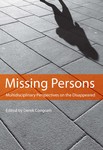We don’t actively support Internet Explorer
It appears that you are using Internet Explorer, which has been discontinued by Microsoft. Support has ended for versions older than 11, and as a result you may face security issues and other problems when using it.
We recommend upgrading to a newer browser such as Firefox, Google Chrome, or Edge for a much better experience across the web.
While this site may work with Explorer, we are not testing and verifying it, so you may run into some trouble or strange looking things.
Overview
This expanded and updated second edition introduces students to both the theoretical and applied aspects of victimology and provides a critical foundation for evaluation. Tammy Landau, an expert in criminal justice, explores patterns of victimization in Canada, the experiences of Aboriginal people in the criminal justice system, restorative approaches to victimization, and the challenges presented when the state is the perpetrator of crime. This edition reflects new trends and development in policy, has been updated to include data from the 2009 General Social Survey, and incorporates a new analysis of the various forms of family violence. Featuring current scholarship, well chosen examples, and thoughtful chapter discussion questions, this uniquely Canadian text is a valuable resource for second- and third-year victimology classrooms.
Table of Contents
List of Boxes
List of Figures
List of Tables
Preface
Acknowledgements
Chapter 1: Introduction to Victimology
The (Re)Emergence of the Victim in Criminal Justice and Criminology
The Canadian Context
Questions for Further Consideration
Chapter 2: Challenging Notions: The Social Context of Victimhood
Media Representations of Crime Victims
What Is “Victimology”?
Mainstream Approaches to Victimology
Critical Approaches to Victimology
Defining the “Victim”
Gendering the Victim
The Case of Sexual Assault
Men and Victimization
Questions for Further Consideration
Chapter 3: Measuring Victimization
Uniform Crime Reports and “Official” Statistics on Crime
Reporting to Police
Definition of “Crime”
Change in Legislation
Changes in Policy and Practice
Linking Police Statistics with Police Effectiveness
Victimization Surveys
Alternative Approaches: Self-Report Studies, Institutional Data, and Inquests
Self-Report Studies
Institutional Data
Inquests
Questions for Further Consideration
Chapter 4: Patterns of Violent Victimization in Canada
General Patterns of Violent Victimization
Responding to Violent Victimization
Thinking about Violent Victimization
Violence in the Family: Spousal Violence
Responding to Spousal Violence
Thinking about Spousal Violence
Violence in the Family against Children and Youth
Thinking about Family Violence against Children and Youth
Violence in the Family against Older Adults
Thinking about Family Violence against Older Adults
Questions for Further Consideration
Chapter 5: Challenging Victimizations: Two Cases in Point
Hate Crimes in Canada
Responding to Hate
Measuring Hate
Aboriginal People, Victimization, and the Criminal Process
Aboriginal Overrepresentation in Criminal Justice: The Victimization Context
Aboriginal Victimization: The Bigger Picture
Questions for Further Consideration
Chapter 6: Everywhere and Nowhere: Contemporary Victims Policy in Canada
Mainstream Programs for Victims in Canada
Restorative Approaches to Victimization: More Than Just Another Alternative?
Challenging Policies: When the State Is the Perpetrator
Conclusions
Questions for Further Consideration
References
Copyright Acknowledgements



